The Middle East anti-drone market is witnessing significant traction owing to integration of anti-drone technology across various domains such as government, military, and defense, as well as in commercial applications. The Middle East anti-drone market size is anticipated to reach over $7.2 billion at a CAGR of about 13.5% during the forecast period. This is attributed to boost in security concerns and the presence of strategic sites that are prone to terrorist attacks.
The Middle East anti-drone market is segmented into technology, application, end use, and platform. By technology, the market is divided into electronic system, laser system, and kinetic system. On the basis of application, the market is bifurcated into detection and disruption. As per end use, the market is classified into military & defense, government, and commercial. The military & defense segment currently holds the largest share of the market due to the presence of numerous military bases and strategic sites. Depending on platform, the market is categorized into ground, handheld, and UAV based. The ground and handheld segments are leading the market, followed by Unmanned Aerial Vehicle (UAV) segment.
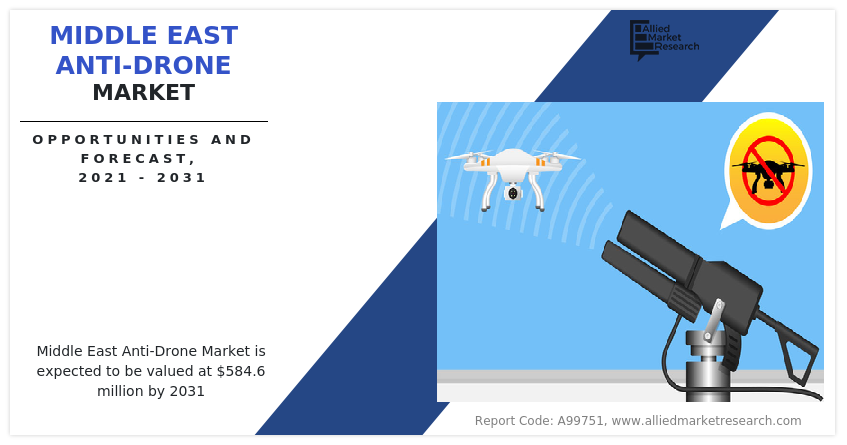
The need for effective counter-terrorism measures to secure government establishments and strategic sites is a key factor that drives the market growth. In addition, surge in threats of terrorist activities in the Middle East encourages the governments to invest in advanced technology. Moreover, the adoption of advanced anti-drone technology for commercial purposes such as disaster management and surveillance is a key factor that augments the Middle East anti-drone market. Furthermore, in recent years, the defense industry has rapidly adopted advanced anti-drone systems for militaries to develop Counter-Unmanned Aerial Systems (C-UAS) to identify the potential malicious drones and disable them. This propels the growth of the market.
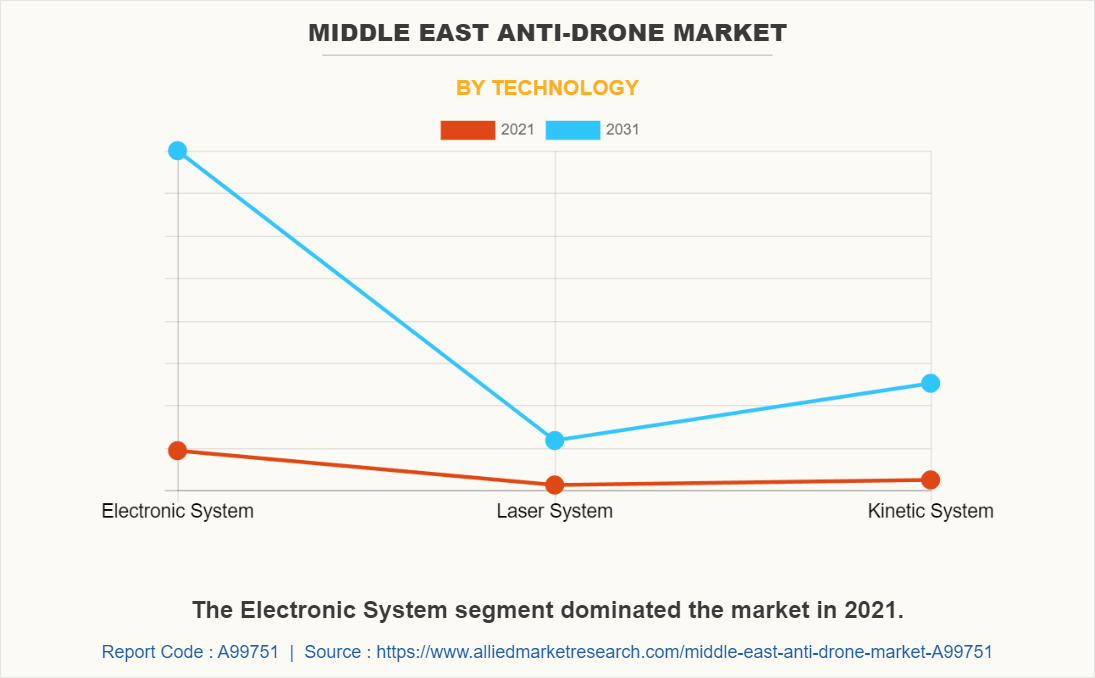
However, the high cost of anti-drone technology is a key factor restraining the growth of the market. In addition, lack of awareness among end users and limited availability of technical expertise are expected to hamper the market development.
On the contrary, the emergence of new technologies such as Internet of Things (IoT) in the domain of defense, boost in demand for unmanned systems, and availability of complex platforms are some of the major factors creating lucrative growth opportunities in the Middle East anti-drone market. In addition, rise in need for cloud computing and machine learning in defense applications is projected to open new avenues for defense contractors and developers. Furthermore, the emergence of high-frequency jamming systems is expected to offer new possibilities for market development.
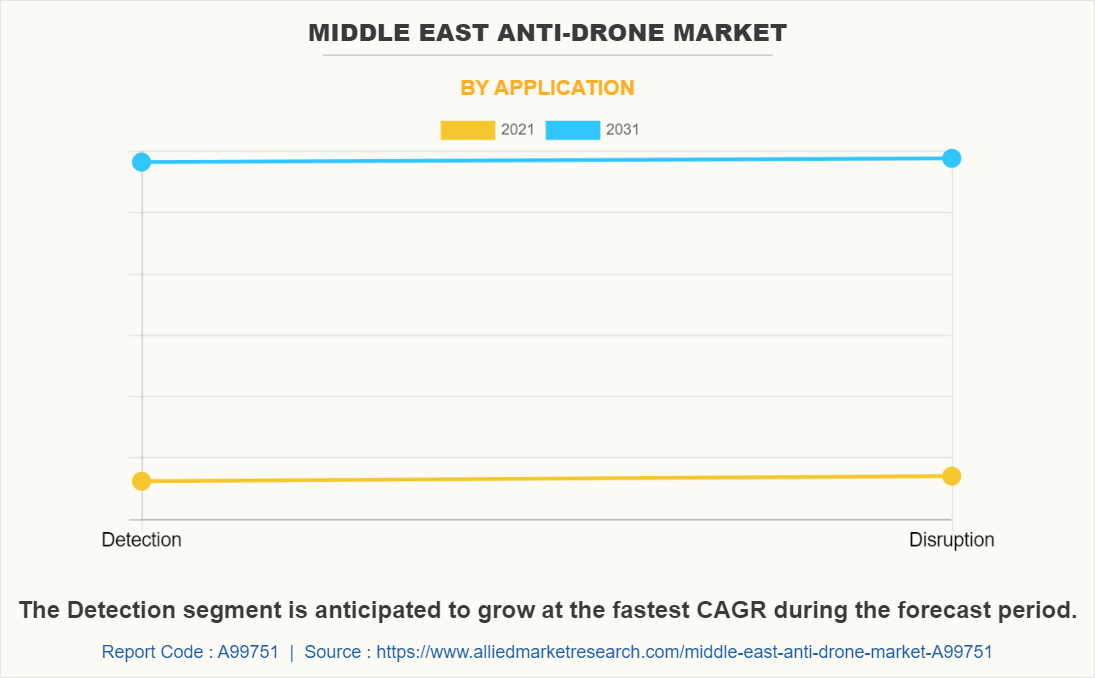
Key players operating in the market have adopted numerous strategies to gain a competitive edge. For instance, Rafael has established its own C-UAS platform called Drone Dome, a system which aims to provide a comprehensive and effective defense platform against malicious drones. In addition, Advanced Defense Technology (ADT) has developed a C-UAS platform known as DronePro, designed to provide a seamless and collaborative platform to perform mission-critical operations against malicious drones.
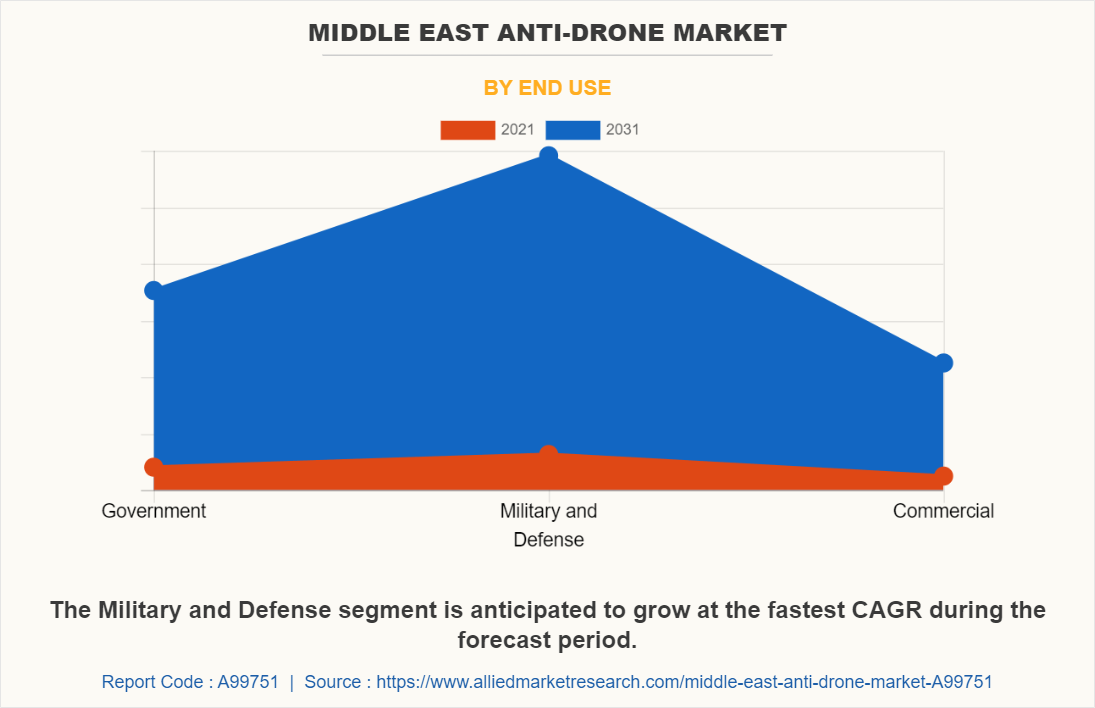
Furthermore, Saab's C-UAS system, DroneGuard, is a multisensor-based UAV defense system used to identify, classify, track, and neutralize any threats posed by malicious drones. Raytheon Technologies Corporation has acquired multiple defense technology companies in the past years and has established its own C-UAS platform, HAWK30, which comprises of hardware and software systems used to detect, classify, as well as neutralize malicious drones.
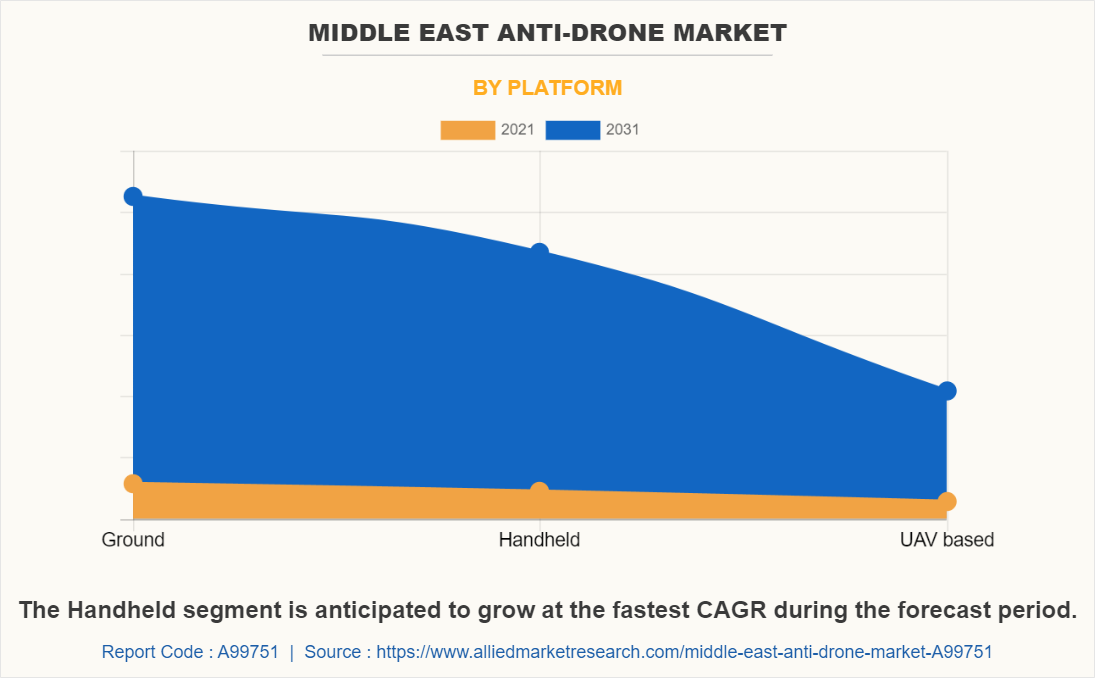
Moreover, Northrop Grumman has developed multiple advanced defense systems, including Integrated Radio Frequency Countermeasure (IRFCM) system, which is used to counter malicious drones. It has obtained the contract to develop its own C-UAS platform, comprising of various components for detection and disruption of UAVs. DroneShield Limited has developed its own C-UAS platform, DroneGun, a tactical drone jammer for detection and disruption of malicious drones. The system comprises of a directional high-power jamming system and a Radio Frequency (RF) detection component to detect the UAVs. Other key players striving in the market to gain one-upmanship include Lockheed Martin Corporation, Boeing, and General Dynamics Corporation.
Key Benefits For Stakeholders
- Enable informed decision-making process and offer market analysis based on the current market situation and estimated future trends.
- Analyze the key strategies adopted by major market players in the Middle East anti-drone market.
- Assess and rank the top factors that are expected to affect the growth of the Middle East anti-drone market.
- Top Player positioning provides a clear understanding of the present position of market players.
- Detailed analysis of the Middle East anti-drone market segmentation assists to determine the prevailing market opportunities.
- Identify key investment pockets for various offerings in the market.
Middle East Anti-Drone Market Report Highlights
| Aspects | Details |
| Forecast period | 2021 - 2031 |
| Report Pages | 75 |
| By Technology |
|
| By Application |
|
| By End Use |
|
| By Platform |
|
| Key Market Players | Thales Group, Northrop Grumman, Raytheon, Israel Aerospace Industries (IAI), Boeing, Advanced Defense Technology (ADT), Rafael, Saab, Desert Wolf Technologies, Droneshield |
The Middle East Anti-Drone Market is estimated to reach $584.6 million by 2031
Rafael, Advanced Defense Technology (ADT), Saab, Raytheon, Northrop Grumman, Droneshield, Boeing, Israel Aerospace Industries (IAI), Thales Group, Desert Wolf Technologies are the leading players in Middle East Anti-Drone Market
1. Enable informed decision-making process and offer market analysis based on current market situation and estimated future trends.
2. Analyze the key strategies adopted by major market players in middle east anti-drone market.
3. Assess and rank the top factors that are expected to affect the growth of middle east anti-drone market.
4. Top Player positioning provides a clear understanding of the present position of market players.
5. Detailed analysis of the middle east anti-drone market segmentation assists to determine the prevailing market opportunities.
6. Identify key investment pockets for various offerings in the market.
Middle East Anti-Drone Market is classified as by technology, by application, by end use, by platform
Loading Table Of Content...
Loading Research Methodology...



